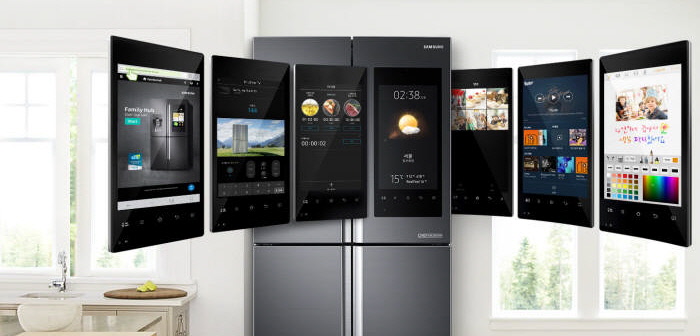Samsung Electronics is planning to apply Y-OCTA display, which is Samsung Display’s technology that applies touch function into flexible OLED, to its first-half strategic Smartphone in 2018. Because this technology implements touch function right away during manufacturing process of a display, separate parts are not needed. In result, it is likely that makers of these parts such as touch-films will be affected greatly due to reduced demands of their products.
It was confirmed that Samsung Electronics decided to apply Y-OCTA display to its flagship model called ‘Galaxy S9 (tentative name)’ and started developing Y-OCTA displays. It is thinking about developing Y-OCTA displays for two of Galaxy S9 models. 5.77-inch and 6.22-inch flexible OLEDs are the size of displays that are currently being prepared. These sizes are same as sizes of Galaxy S8 series that was released during first half of this year.
Samsung Electronics introduced Y-OCTA technology to only one of Galaxy S8 model (5.77-inch). Samsung Electronics also used current film-type touch instead of Y-OCTA technology to its Galaxy Note 8 that will be released next month.
However Y-OCTA technology will be used for all Galaxy S9 models as enough production facilities have been established for Y-OCTA panels.
Y-OCTA displays are manufactured from one of Samsung Display’s A3 lines in Tangjung.
According to industries, Samsung Display’s current production capacity of Y-OCTA display is between 3 million to 4 million Smartphones per month.
Size of this production capacity will be more than doubled in 2018 as Samsung Display is currently constructing L7-1 LCD production line, which is being converted to OLED, as Y-OCTA panel production line with a goal of finishing construction by end of this year. It is heard that Samsung Display will be able to supply about 10 million Y-OCTA panels per month once this line starts operating.
5 million Galaxy S series, which is Samsung Electronics’ main Smartphone, and 3 million Galaxy Note series are produced monthly. Even when yield is considered, Samsung Display will have Y-OCTA panel production lines that will be able to supply enough Y-OCTA panels for all of Samsung Electronics’ main Smartphone models.
Y-OCTA technology combines touch function with a display and it takes care of manufacturing of a panel and touch function through single process.
While film-based TSP (Touch Screen Panel) was needed in order to implement touch function through flexible OLED panel until now, Y-OCTA technology does not need such process. Due to this reason, it is able to make a display much thinner and lighter and it can reduce production cost by 30%.
However this is horrible news for manufacturers of parts that are needed to implement touch function as they are losing opportunities to supply their products. TSP manufacturers that used to supply TSPs to Samsung Electronics are in positions to lose their business opportunities starting from next year. Process of attaching TSP to a cover glass and materials like ITO (Indium Tin Oxide) films are not going to be needed anymore.
Samsung Electronics and Samsung Display are planning to apply Y-OCT technology with Samsung’s flagship Smartphones at the center. As Y-OCTA technology is Samsung’s own technology that differentiates itself from its competitors, Samsung Electronics and Samsung Display are planning to make full use of premium strategy as much as possible.
Expansion of application of Y-OCTA technology is just a matter of time. Because it is excellent in reducing production cost, there is a high chance that it will be applied to flexible displays and Smartphones that will be released by Samsung Display and Samsung Electronics.
It is likely that companies that used to supply parts such as TSP to Samsung Electronics and Samsung Display will need to find different path for their businesses.
“LCD markets also shrank considerably due to appearance of displays that are combined with touch function.” said a representative for an industry that specializes in touch function. “As this technology is spread to flexible OLED, it is inevitable that our current businesses will begin to shrink.”
Staff Reporter Yun, Keonil | [email protected]



